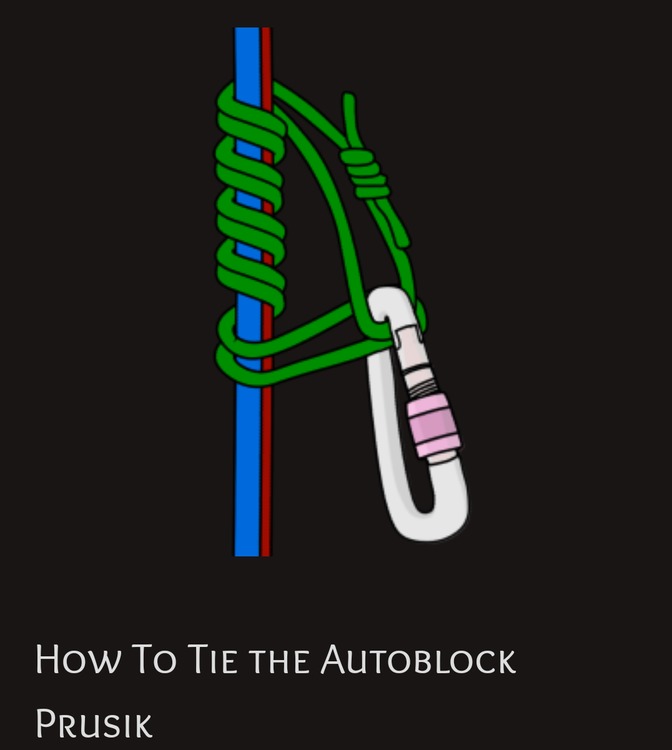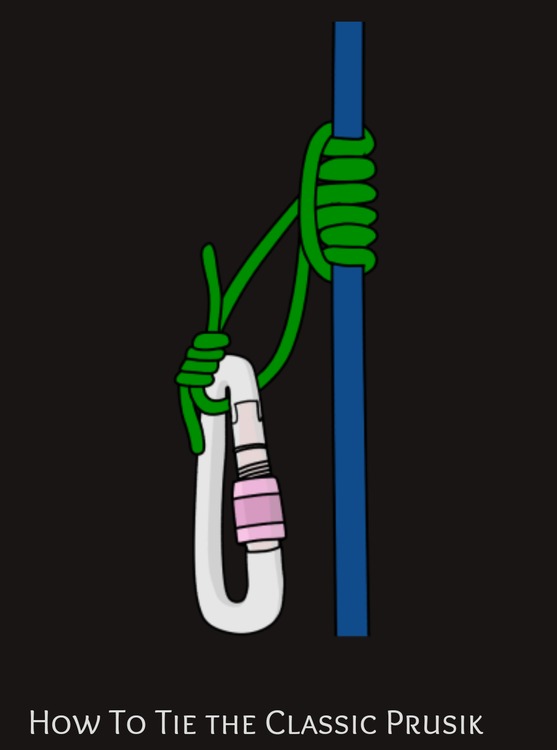Autoblock/prusik knot for rappelling
|
|
Got into a debate with my climbing partner about rapping backups. I use the French autoblock: And she uses the classic prusik: For context, we do mostly single pitch and use the same diameter cord (5 mm) under an ATC. I hate the classic because it takes longer to tie and is impossible to loosen compared to the French autoblock. Sauce: vdiffclimbing.com/prusik-ty…; What's your 2¢? |
|
|
they're both fine |
|
|
Prusik is overkill for under-the-ATC ropegrab. |
|
|
What was the debate? They both work. |
|
|
They are both safe to use. An autobloc can be released under tension, a prusik can't. That's the main reason for using an autobloc for abseil back up. |
|
|
Whatever you are more comfortable with and confident you will use it correctly is the best choice, so you're both right. But you're both wrong using 5 mm cord. Too thin. No wonder it's impossible to loosen in a Prusik. |
|
|
6-7mm or a hollowblock, always the autoblock wrap. I don't see a reason for using a prussik on something that never even has to take your body weight. |
|
|
Glowering wrote: What's wrong with 5mm cord for an under the ATC autoblock? It's rated to 5.4kn for basic PMI accessory cord and you are only asking it to hold what, 30-40 pounds? It's only a fraction of bodyweight. 5mm cord bites hard on a skinny line and you aren't going to generate anywhere close to its rating rapping or emergency jugging. |
|
|
Are the autoblock and kleimheist the same thing? Have been using a prusik my whole life so the names of these other methods confuse me. |
|
|
James Frost wrote: Not the same. Klemheist courtesy of Animated Knots by Grog: |
|
|
Jack Servedio wrote: Nothing wrong (IMO), but if you wind up needing to haul someone you’ll want to use something stronger. |
|
|
James Frost wrote: Almost the same. The primary difference in use for me is that an autoblock is a tiny bit quicker to wrap and can hold in both directions. I like to use my autoblock to lock off some slack when threading my rappel which I'm not sure a kleimheist would do as well |
|
|
I tend to use the Prusik (what you're calling the classic Prusik) but that's because I've determined that two wraps with that knot is the proper level of friction for the rope and rappel device I climb on the most. If I'm climbing with a different rope and/or rappel device, I'll do more/fewer wraps or switch knots to get the right level of friction. In every scenario I've seen, the Prusik is EASIER to loosen than other friction knots, because it only tightens around the rope in one direction, so you just reverse that direction. There's the bight (which you clip your carabiner into) and the turn which goes around that: just grab the turn and move it toward the end of the bight and the knot comes loose instantly. |
|
|
Using a prusik is a great way to have it weld to your rope if used for repelling. Autobloc is what I use. Prusik is for ascending the rope. |
|
|
lsdclimber Ellis wrote: In every scenario I've seen, the Prusik is EASIER to loosen than other friction knots, because it only tightens around the rope in one direction, so you just reverse that direction. There's the bight (which you clip your carabiner into) and the turn which goes around that: just grab the turn and move it toward the end of the bight and the knot comes loose instantly. |
|
|
David K wrote: The French autoblock is the best. You don't have to pull anything because it's literally not even a knot. Just unclip one strand and pull. Not sure how a prusik can be easier to untie than something you literally don't even have to untie. |
|
|
|
|
|
In this thread: people who hear a statement about loosening a knot, and respond by talking about how easy their favorite knot is to untie. Yeah sure buddy, when my knot is too tight I'll just untie my backup one handed 1000ft off the ground. That way instead of having two hands and a backup knot on the brake strand, I've got one hand on the brake strand, and no backup knot. This is literally worse than just not having a backup knot, because if I have no backup knot I can keep two hands on the brake strand. Good plan, guys. |
|
|
The difference between the prusik and the autoblock is that the prusik cannot be released while loaded and the autoblock can. (Speaking of "ease of untying" misses the point.) The releasability of the autoblock makes it a more convenient choice for rappel backup (and various belay-escape methods), but is also a possible downside in an emergency, as an autoblock may be less likely than a prusik to grab if there is a hand on it. For the most part, this is not an issue, since the emergency function of the backup is to activate when the hand sliding the knot down has, for some reason, released. However, if the rappel is improperly configured, something that is easy to do if the backup is on a leg loop and the friction device is on the belay loop, then there is the potential for releasing the backup if it collides with the device, and although this might happen with both knots, the autoblock would be more susceptible to releasing in this situation. |
|
|
Who needs a third hand when you have a perfectly good leg to wrap the rope around? |
|
|
This thread is cycling through the same points over an over more than political candidates debating. |

 Continue with onX Maps
Continue with onX Maps Sign in with Facebook
Sign in with Facebook

























